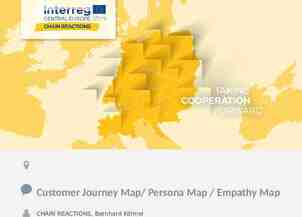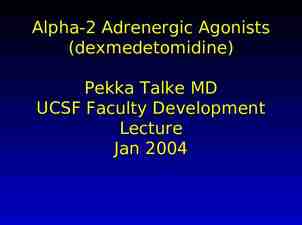SLU125 Choosing Wellness Brief Overview: Cardiovascular Disease
46 Slides2.61 MB

SLU125 Choosing Wellness Brief Overview: Cardiovascular Disease

http://www.pbs.org/wgbh/nova/body/map-human-heart.html Beating more than 100,000 times a day in an average adult, the human heart is the essential pump that circulates oxygen and nutrients throughout the body.

4 Chambers of the Heart Right atrium-receives oxygen-depleted blood from body and pumps it through the tricuspid valve into right ventricle. Right ventricle-receives oxygendepleted blood from right atrium and pumps it through the pulmonary valve into lungs via pulmonary artery.

4 Chambers of the Heart Continued Left atrium-receives oxygen-rich blood from lungs via pulmonary veins and pumps it through mitral valve into left ventricle. Left ventricle-receives oxygen-rich blood from left atrium and pumps it through aortic valve to be delivered throughout body, including to the heart muscle itself via coronary arteries.

http://www.youtube.com/watch?v NF68qhyfcoM

Question 1 Name the 4 chambers of the heart. State if they receive oxygendepleted, or oxygen-rich blood.

Cardiovascular Disease Heart disease affects more than 81 million Americans annually. Leading cause of death men and women in U.S. 1 out of 3 women will die of heart disease (vs. 1 out of 30 breast cancer). 1 death every 38 seconds--- 2,300 daily Cardiovascular disease refers to different types of heart or blood problems.

EX of Cardiovascular Disease Atherosclerosishardening of the arteries. Angina pectoris- heart muscle not getting enough blood. Congestive heart failure- heart’s inability to pump out all the blood that returns to it.

EX of Heart Disease Continued Congenital heart defect- defect or malformation of heart or major blood vessels. Rheumatic heart disease- untreated strep infections lead to Rheumatic fever that can permanently damage the heart muscle and heart valves. Heart value disorders- most common is mitral valve prolapse; may require surgery for leaky valve.

Question 2 Which of these cardiovascular diseases is also known as hardening of the arteries? Atherosclerosis Angina pectoris Congestive heart failure Congenital heart defect Rheumatic heart disease Heart value disorders

Coronary Heart Disease (cont.) Coronary heart disease (CHD)- Narrowing of the arteries that supply blood and oxygen to the heart. CHD also called coronary artery disease (CAD). Caused by fat and plaque build up--clog the arteries (hardening of the blood).

Coronary Heart Disease (cont.) CHD Caused by Atherosclerosis (form of arteriosclerosis, hardening of the arteries) Arteries become narrowed by deposits of fat, cholesterol and other substances. Cells that line the arteries become damaged due to smoking, high BP, high insulin or glucose, and LDL. Arteries become inflamed, collect plaques, lose their elasticity, and restrict blood flow.

Coronary Heart Disease (cont.) Atherosclerosis http://dictionary.reference.com/browse/Atherosclerosis?s t

Coronary Heart Disease (cont.) Atherosclerosis

Question 3 Fill in the blanks Atherosclerosis causes arteries to narrow from deposits of fat, cholesterol and other substances. Cells that line the arteries become damaged due to , , high insulin or glucose, and LDL.

Heart Attack 1 1 9 l l Ca Heart attack occurs when blood flow to a part of heart is blocked for a long enough time that part of the heart muscle is damaged or dies. Known as infarction.

Risk Factors for Cardiovascular Disease The American Heart Association (AHA) identified six major risk factors for CVD that can be avoided: Tobacco use Physical inactivity High blood pressure Obesity Unhealthy blood cholesterol levels Diabetes

Question 4 The American Heart Association (AHA) identified 6 major risk factors for CVD that can be avoided. Name 4 of them.

How to Prevent CVD Exercise 30 minutes most days of the week. Even activities such as gardening, housekeeping, taking the stairs, and walking the dog count toward daily exercise. Get moving. Manage stress. See Insel and Roth Ch 2.

Prevent CVD Don't Smoke Don’t use Tobacco Smoking/tobacco significant risk for developing heart disease. Tobacco chemicals damage heart and blood vessels, leading to narrowing of the arteries (atherosclerosis). http://youtu.be/l26f4f-V4jc

Prevent CVD Don't Smoke Don’t use Tobacco Nicotine makes heart work harder by narrowing blood vessels and increasing heart rate and BP. Carbon monoxide in cigarette smoke replaces some of the oxygen in blood. This increases blood pressure by forcing heart to work harder to supply enough oxygen.

Question 5 Name 2 specific ways tobacco/nicotine affects the heart.

Prevent CVD Get Regular Health Screenings High BP and high cholesterol can damage your heart and blood vessels. Get regular screenings, know your numbers and whether you need to take action.

Blood Pressure (BP) BP- Force exerted by blood on blood vessel walls. Created by heart’s pumping action.

Preventing High Blood Pressure http://www.nhlbi.nih.gov/health/health-topics/topics/hbp/prevention Follow a healthy diet. Limit sodium (salt) and alcohol use. See The National Heart, Lung, and Blood Institute's DASH (Dietary Approaches to Stop Hypertension) eating plan Be physically active. Routine physical activity can lower HBP and reduce your risk for other health problems. Maintain a healthy weight. Quit smoking. Smoking can damage your blood vessels and raise your risk for HBP. Smoking also can worsen health problems related to HBP. Learn to manage and cope with stress.

BP Classification for Healthy Adults Normal Systolic (contraction) below 120 AND Normal Diastolic (relaxation) below 80 Prehypertension Systolic 120-139 OR Diastolic 80-89 http:// www.mayoclinic.com/health/what-is-bloodpressure/MM00783

Question 6 fill in the blanks BP Classification for Healthy Adults Normal Systolic (contraction) below AND Normal Diastolic (relaxation) below .

Cholesterol Cholesterol- Fatty, waxlike substance that circulates through bloodstream. Is important component of cell membranes, and the protective sheaths around nerves. The liver manufactures cholesterol and we get it from foods as well.

Cholesterol HOWEVER, Excessive cholesterol can clog arteries and increase risk of CVD.

LDL and HDL Lousy and Happy LDL- Low-density lipoproteins. Shuttle cholesterol from the liver to the organs and tissues that require it. Excess is deposited in the blood vessels. HDL- High-density lipoproteins. Shuttle unused cholesterol back to the liver for recycling. By removing cholesterol from blood vessels, HDL helps protect from atherosclerosis.

Question 7 fill in the blanks LDL and HDL (Lousy and Happy) LDL- Low-density lipoproteins shuttle cholesterol from the liver to organs and tissues that require it. Excess is deposited in the . HDL- High-density lipoproteins. Shuttle unused cholesterol back to liver for recycling. By removing cholesterol from blood vessels, HDL helps protect from .

Normal Cholesterol Guidelines See Insel and Roth Total Cholesterol MG/DL Less than 200 LDL Cholesterol MG/DL Less than 100 HDL Cholesterol MG/DL 60 or more Triglycerides MG/DL Less than 150 (Triglyceride- Type of blood fat that can be a predictor of heart disease)

Question 8 fill in the blanks Normal Cholesterol Total Cholesterol MG/DL less than LDL Cholesterol MG/DL Less than HDL Cholesterol MG/DL 60 Triglycerides MG/DL Less than

Prevent CVD Eat a Heart-Healthy Diet Limit saturated fat and trans fats. Saturated fats include red meat, dairy products, coconut and palm oils. Trans fat include deep fried fast foods, bakery products, packaged snack foods, butter, crackers.

Prevent CVD Eat a Heart-Healthy Diet Eat fruits, vegetables, whole grains and low-fat dairy products. Beans, other low-fat sources of protein and certain types of fish also can reduce risk of heart disease. http:// www.youtube.com/watch?v TofuvyeiRaM&featur e youtube

Prevent CVD Avoid Obesity Death from CVD is 2 or 3x more likely in obese people than it is in lean people. Remember: Excess weight/blood causes heart to work harder. This causes chronically elevated pressures within the heart chambers that can lead to ventricular enlargement, and eventually the heart muscle can start to fail.

Prevent CVD Understand Diabetes Disorder characterized by elevated blood glucose levels due to an insufficient supply or inadequate action of insulin. Doubles risk of CVD for men; triples risk for women. Presents with higher rates of hypertension, obesity, and unhealthy blood lipid levels.

Prevent CVD Understand Diabetes Diabetics often have platelet and blood coagulation abnormalities that increases risk of heart attacks/strokes. Pre-diabetics also have significantly increased risk of CVD.

Question 9 List 2 ways obesity and diabetes affect the heart.

Prevent CVD

Prevent CVD by Understanding and Controlling Psychological and Social Factors Stress Depression Chronic Anger and Hostility Anxiety Suppressing Psychological Distress Social Isolation Low Socioeconomic Status

Question 10 List 3 ways to avoid CVD

Warning Signs of Heart Attack, Stroke, or Cardiac Arrest http:// www.thevisualmd.com/health centers/cardiovascular health /heart attack and angina/und erstanding heart attacks vid eo

Question 11 List 3 typical signs of a heart attack.








